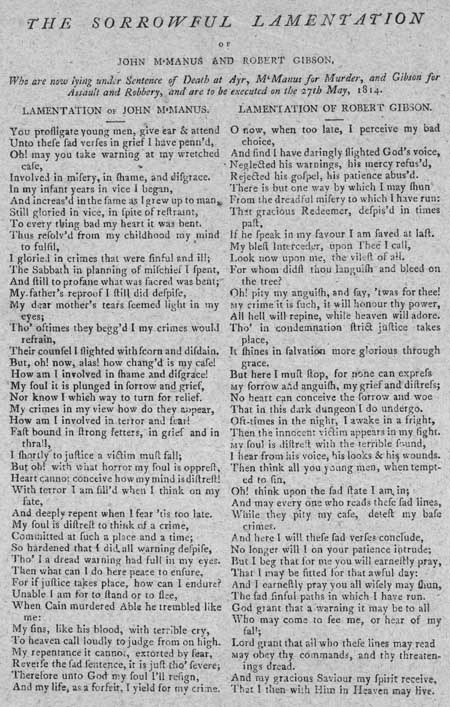Commentary
Following on from the title, the report continues: 'Who are now lying under Sentence of Death at Ayr, M'Manus for Murder, and Gibson for Assault and Robbery, and are to be executed on the 27th May, 1814.' This crime report takes the form of a separate lamentation from the two condemned prisoners, with both of the lamentations written in ballad format. The opening line of the first lamentation reads: 'You profligate young men, give ear & attend'. The opening line of the second lamentation reads: 'O now, when too late, I perceive my bad choice'. The ballad-style lamentations contained in this broadside emphasise the importance of redemption from God, following a confession from the condemned prisoner. Both of the lamentations employ dominant religious language and imagery in order to persuade the young to stay on the path of righteousness. In addition to acting as a grim example to others, these lamentations are also intended to show that even murderers can obtain mercy from God, providing they conform to religious doctrine. This fixation with forcing sinners to reach some sort of understanding with God, reveals much about the religious nature of Scottish society during the early nineteenth century. Broadsides are single sheets of paper, printed on one side, to be read unfolded. They carried public information such as proclamations as well as ballads and news of the day. Cheaply available, they were sold on the streets by pedlars and chapmen. Broadsides offer a valuable insight into many aspects of the society they were published in, and the National Library of Scotland holds over 250,000 of them.
View Transcription | Download PDF Facsimile
|
 |
Date of publication:
1814 shelfmark: L.C.Fol.73(004)
 View larger image
View larger image
|


